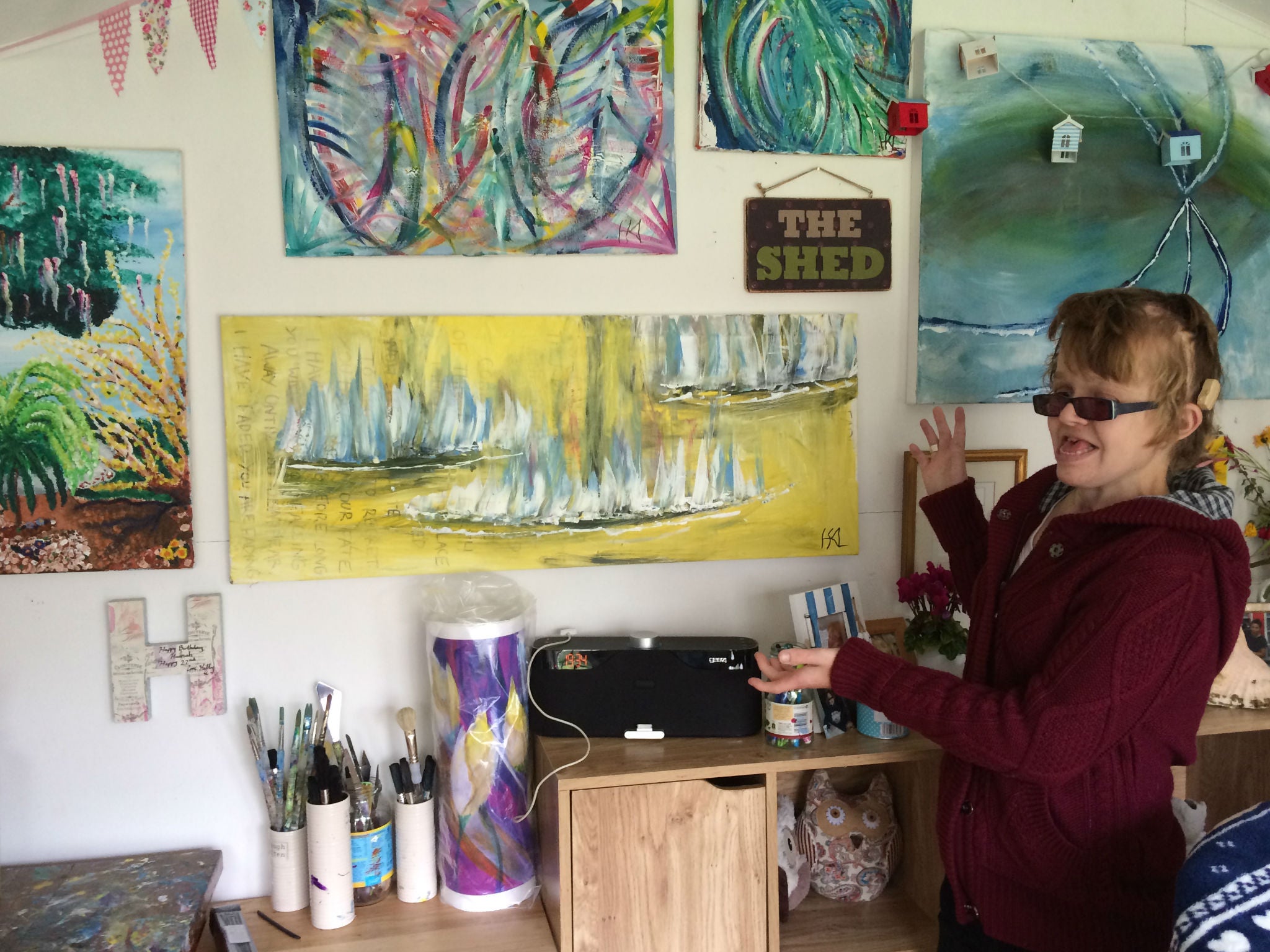The GOSH patient who showed how seriously ill children can still live rich and fulfilling lives
Hannah was born with Pfeiffer Syndrome with a cloverleaf skull, and passed away in 2014

Your support helps us to tell the story
From reproductive rights to climate change to Big Tech, The Independent is on the ground when the story is developing. Whether it's investigating the financials of Elon Musk's pro-Trump PAC or producing our latest documentary, 'The A Word', which shines a light on the American women fighting for reproductive rights, we know how important it is to parse out the facts from the messaging.
At such a critical moment in US history, we need reporters on the ground. Your donation allows us to keep sending journalists to speak to both sides of the story.
The Independent is trusted by Americans across the entire political spectrum. And unlike many other quality news outlets, we choose not to lock Americans out of our reporting and analysis with paywalls. We believe quality journalism should be available to everyone, paid for by those who can afford it.
Your support makes all the difference.Hannah Lindfield died at home in her family’s Cornish farm house with parents, siblings, friends and her guide dog Bella by her side. She was 23-years-old and had spent much of her life under the care of Great Ormond Street Hospital (GOSH) in London.
“Hannah was born with Pfeiffer Syndrome with a cloverleaf skull,” says her mother, Camilla. “When she was born the nurses took her away and nobody spoke to us at first. When they told us that something was wrong our instincts were pure protection.”
Pfeiffer Syndrome is an extremely rare genetic disorder and it caused Hannah’s skull to fuse too early, meaning that it couldn’t develop at the same rate as her brain, and she suffered a build-up of fluid, breathing problems and problems with her eyesight.
Within days of her birth she was transferred from her local hospital in Plymouth to GOSH, where the craniofacial team specialises in treating Pfeiffer Syndrome. It forged a bond that would last her whole life.
“They operated on Hannah when she was six weeks old to alleviate the pressure”, says Camilla. Hannah was then fitted with a shunt to help the flow of fluid around her brain, underwent a tracheotomy to help her breathe, and was fitted with a frame for her face.
These were just the first of more than 100 procedures Hannah underwent at GOSH. By the time of her death in 2014, when she had been transferred to the care of the National Hospital for Neurology and Neurosurgery in London and her local hospital in Plymouth, her airway had become so damaged she could no longer undergo general anaesthetic.
“The wonderful thing about GOSH was that Hannah felt safe there, she called it her other home because the staff listened to her,” says Camilla.

Despite her problems and the need to make regular trips to GOSH, Hannah was able to live an active life, skiing with her sister Lamorna, now 23, and sailing with her brothers Josh, 27, and Oliver, 21, into her teens. “She even completed the Ten Tors challenge across Dartmoor three times,” says Camilla, who cared for Hannah at home with her husband Mark, a school inspector.
As she grew older, Hannah’s medical problems became more complex. At 16, she got her guide dog, Bella.
“When she had to stop doing the physical things, she went down the creative route. She completed her art GCSE at GOSH and went on to do her first year on a foundation art degree,” says Camilla, who says she wants Hannah’s story to prove that even children born with debilitating conditions can live fulfilling lives.
For Hannah that fulfilment came in the forms of her painting and poetry. She painted scores of vibrant oil on canvas works. “She was stubborn as hell,” recalls her mother. “She wouldn’t give up: when she could no longer use brushes she used a palette knife.”
Hannah also spent the last year of her life writing a book about her life. Invisible Struggle has since been published by her family. “I’ve not been able to read it yet,” says her sister Lamorna, who said the family only found the work after her sister’s death. “It’s too hard right now.”
By 2014 her health rapidly went downhill and she came home from hospital for the last time. “The care there was brilliant, but it was very different. She hated leaving GOSH, but the staff and her nurses still came to visit. Several of the nurses who treated her at GOSH even came down here for her funeral.”
When death came it was on Hannah’s terms. “She died at home in our bed,” says Camilla, who said Hannah made the decision she no longer wanted any treatment. “There was food and wine and her family around her. A family friend works in the film industry and he gave her the pyjamas from Bridget Jones’s Diary, which she loved to wear. That’s how she wanted to say goodbye, amid moments of happiness.”
To Give to GOSH go to: http://ind.pn/1Mydxqt
To find out more about our appeal and why we're supporting GOSH go to: http://ind.pn/1MycZkr
Join our commenting forum
Join thought-provoking conversations, follow other Independent readers and see their replies
Comments